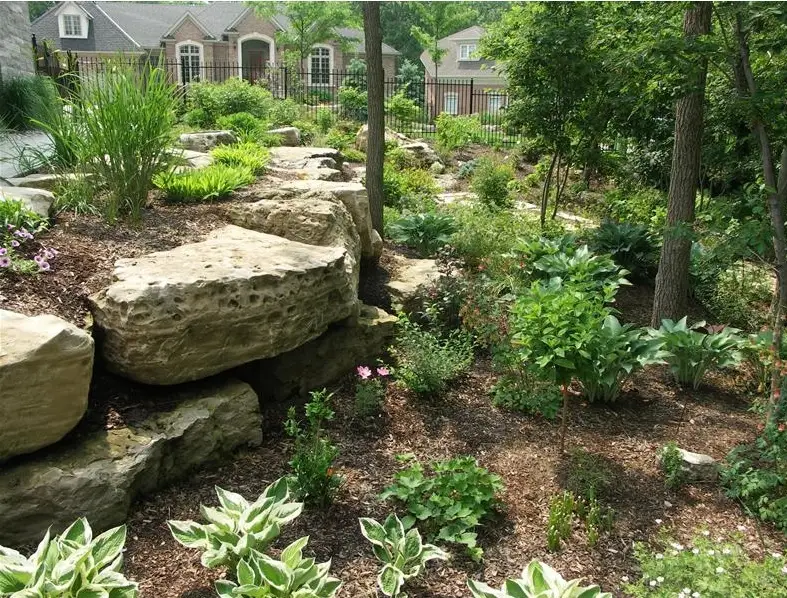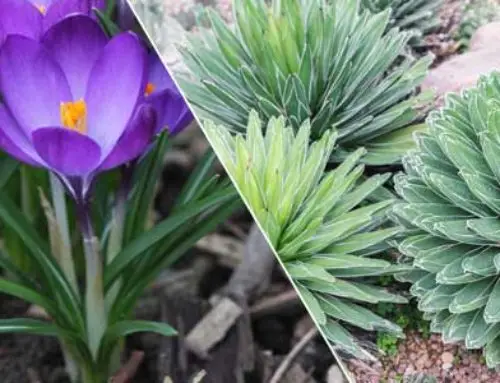Mulch can make all the difference in your landscaping design and greatly enhance the look of garden plantings. Most professional landscapers finish their work with garden mulch. It acts as a porous membrane, which easily absorbs water while simultaneously reducing evaporation from the soil. Since the top layer of soil can bake in the sun, mulch prevents the topsoil from becoming a hard crust, which stops moisture from soaking down through the soil. Spreading mulch over your garden is the best way to save time and energy. It holds the soil’s moisture, so you don’t have to water as often.
Reduce Weeds with Mulch
Organic mulch suppresses the number of weeds that take hold by up to seventy-five percent. It’s a gardener’s best friend because you don’t have to spend so many hours clearing your garden. Mulch prevents sunlight from reaching the seeds in the soil and effectively smothers them from germinating. Additionally, as the material breaks down over time, it releases nutrients into the oil since mulch contains essential minerals and other important components to nurture garden plants. This process improves soil structure and fertility while feeding visible (earthworms) and invisible organisms (microorganisms) that keep your garden blooming and healthy.
Earthworms do a great job of aerating your garden. They provide drainage and nutrition by ingesting, grinding, and digesting large quantities of soil. Their excretions are richer in nutrients than the surrounding soil. By adding mulch to your garden, you’ll develop a healthy workforce.
Like earthworms, microorganisms ensure your plant’s health and development through the symbiotic relationships with your plant’s roots. They decompose plant residues into a simpler structure that your plants need while synthesizing plant hormones to make soil minerals available. When you place mulch on top of your soil, you create a virtual feast because organic mulches serve as food for many microorganisms in the soil. Mulch also helps keep the soil temperature constant, so this keeps the activity of the microorganisms at an even rate.
An early spring application of mulch can extend the gardening season. Many plant varieties like cooler soil at the start of spring and mulch, protect from rising temperatures. For plants that love to be bundled in warmth during hot summer, mulch helps keep the heat contained. It also protects the roots from light frosts that can kill tender annual plants and insulate perennial plant roots from destructive winter temperatures.
Pine Mulch
There are many types of mulches on the market, but shredded pine mulch is one of the most popular mulches used in landscape plantings. Many landscapers use it due to its appearance, serviceability and affordable price. The reddish-brown mulch darkens to a chestnut colour over time, and it has a pine-fresh aroma.
Shredded pine mulch is made from 100% tree bark, and the bark is often shredded two or three times and contains a great deal of nutrition. The bark mulch is slightly acidic, so when it decomposes, it helps to create the right soil pH for plants to receive nutrients. Because mulch alters the structure of the soil, it usually increases root growth. Shredded pine bark mulch’s small size makes it easy to apply in tight spaces, such as newly sprouted flower beds and vegetable gardens with tender shoots that are closely packed together.
How Much Mulch Should I Use?
The recommended mulching depth is to 2 to 2.5 inches. At this depth, most mulch will accommodate the primary objectives of weed control, soil moisture conservation and temperature modification. Mulch depths of less than 2 inches may not satisfy this objective. When reapplying mulch over an existing base, bring the total depth up to 2 to 2.5 inches.





